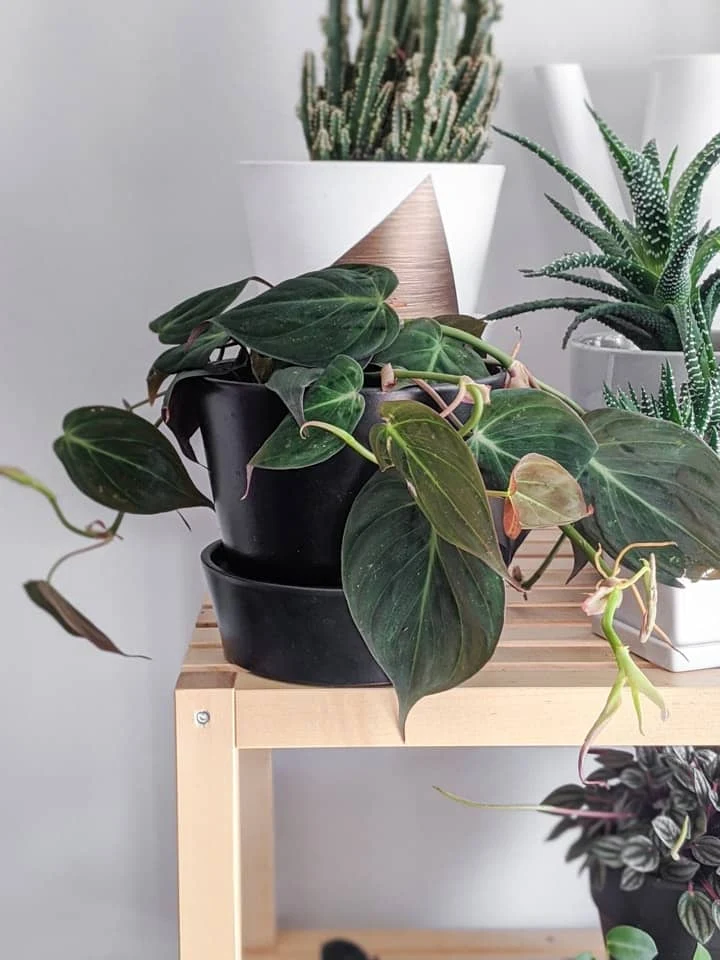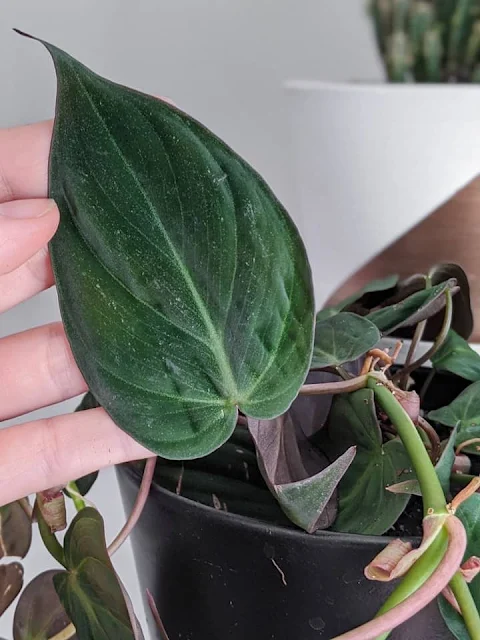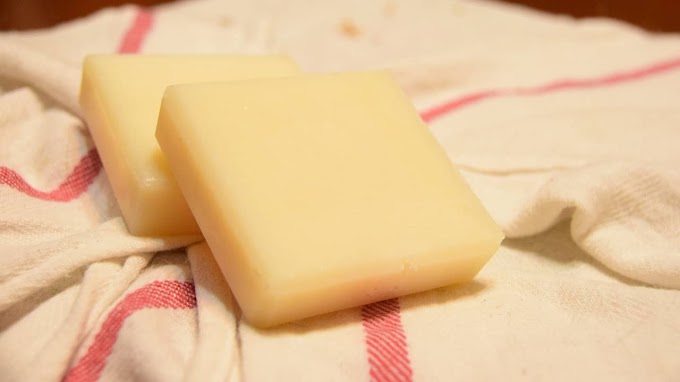 |
| One of my favorite plants on earth: Philodendron Micans! |
Blog last updated on December 4, 2022
Over the last 3-4 months, we have added a range of plants to our home. During this period, we bought variegated monstera, monstera adansonii, golden pothos, ZZ plant, croton petra, variegated rubber plant, baby rubber plant, and a few more.
And we are so happy to have bought these green buddies! The happiness and solace that I personally find being with the plants is simply transcendent. In fact, it is therapeutic for me personally, cleanses the mind from all the clutter, and helps to bring calm and peace! ☮
If you are new to gardening and the plants world and wondering how to take care of your newly acquired philodendron micans, you have landed at the right place! As today, I'm going to talk about philodendron micans care in detail. Most people on the internet declare that micans philodendron is an easy plant to raise.
But, in our experience, we have found it to be a very sensitive plant. With a little bit of more water or less amount of sunlight - the leaves start to curl or fold inside.
Anyway, having said that, after reading this guide, you should find raring your micans Philodendron a simple and loving journey!
This is What You Will Learn in This Philodendron Micans Guide
- Outlook about micans philodendron
- Light requirements
- Water requirements
- Humidity needs
- Suitable soil and fertilizers
- Groth and repotting needs
- Propagation
- Common problems
- About common indoor plant pests
- FAQs, including where to buy your philodendron micans
What is a Philodendron Micans?
For those, who might not be aware, Micans is a type of philodendron, which is a large genus of plants in the Araceae family. There are tons of different types of philodendrons, and they can look very different. It looks a lot like the typical heart-leaf philodendron you might be used to seeing in some houses or local nurseries.
What sets the philodendron micans apart from the traditional heart-leaf philodendron, though, is its beautiful velvet finish. In fact, the common name for the philodendron micans is the velvet leaf philodendron. The leaves have a greenish-purplish finish with a bit of a shimmer, something I personally adore a lot!
Light Requirements

Philodendron Micans Light Requirements 💡
Like many other philodendrons, micans philodendron plants enjoy bright indirect light. Too much direct sunlight can burn the leaves. They can tolerate slightly lower levels of light than houseplants, but they would have smaller leaves.
In the absence of bright indirect light, the plant may be slightly stemmed or elongated. Stemmy/leggy means more space between each leaf.
Tip 👉 Don't be afraid to keep them in direct morning soft sunlight for up to 1 hour. But do this only if you are fully dedicated and disciplined. If you happen to forget and leave the plant under direct sunlight, it will surely burn. Whereas, up to 1 hour of daily morning sun can do wonders for your philodendron micans!
Water and Humidity: What’s Best For Your Philodendron Micans?
Well, the amount of watering entirely depends on the location where your philodendron micans are kept. If it's near a very bright light, it may need more frequent watering. Whereas, if it's away from direct sunlight, you might need to water it infrequently. Simply speaking, you can't have the formula to water your plants twice or thrice a week!
To summarize the water requirement:
- If it’s placed in a warm location that gets lots of bright, indirect light, it will need regular watering.
- If it’s placed in a cooler location with much less light, your plant will need much less water, otherwise, you run the risk of waterlogging the soil.
Generally, philodendron micans prefer evenly moist soil.
Instead of following a strict ‘water once a week schedule’ like most guides tell you, follow a regular ‘checking’ schedule, where you observe your gorgeous plant to see if it really needs water.
Well, it might seem a daunting task. But, it's true that being plant parents is simply overrated. It takes a lot of commitment and if you aren't committed, you simply should not think of having plants at home!
Simply, avoid overwatering your micans philodendron and you’ll be fine. That means watering it again when the top inch or so of soil dries out. Be careful to not let the soil dry out too much—a sure sign of this is when the soil begins to contract and pull inwards away from the edges of the planter.
This won’t necessarily hurt the plant if it happens a time or two. However, when the soil shrinks away from the sides of the planter, water can escape down those gaps and go right to the bottom—not even hitting the roots! Find the sweet spot between the soil beginning to dry out and starting to shrink. When the plant is not actively growing in the winter, you can water it less—about once a month.
While micans philodendron is very patient with all types of indoor humidity levels, you’ll find that the leaves are bigger and healthier when humidity levels are a bit higher. I have one in my bedroom and another one in my bathroom. In winter it gets afternoon sun and all of the nice humidity that comes with steam showers! It’s the perfect spot for it.
A few ways to up the humidity around any plant are to mist the leaves with plain water in a spray bottle, and set the plant pot on a tray filled with pebbles and water (make sure the pot isn’t submerged in the water)!
Soil and Fertilizer for Philodendron Micans
Any well-draining indoor potting soil is a safe bet. I don’t typically use anything fancy for my plants. Occasionally I’ll use regular soil and lighten it up myself using some vermicompost and coco peat, which are both excellent supplies to have on hand for any house plant hobbyist.
I also feed my philodendron micans the same regular house plant fertilizer I give the whole gang. It’s a concentrated liquid fertilizer I add to the watering can once a month. Remember that you might not need additional fertilizer if your soil is fresh. And don’t fertilize in the winter.
Growth Rate and Repotting
With proper care habits, your micans philodendron will be a fast grower, quickly trailing or climbing many feet. Mine is a younger plant, so it isn’t that long, but it has already developed some decent length! My heart-leaf philodendron reaches down to the floor from a 5-ish-foot tall shelving unit, something I just love! :)
When repotting, size up only about 2 inches. Otherwise, the plant might develop root rot from sitting in excess wet soil. You want to give the plant ample room to flourish and grow without drowning it!
A pot with a drainage hole really is best for the micans, too—it will help you avoid overwatering.
Pruning
The velvetleaf philodendron has meager pruning needs, but trimming the stems can help give the plant a fuller look. That’s because cutting the ends off of stems encourages new growth out from the side of the area on the stem just above the cut. If you don’t trim the plant, the single strands will just continue growing with no branching.
Philodendron Micans Propagation
You also want to make sure there are nodes on the branch you cut. Those are just basically little nubs along the stems. It’s where roots grow. Remove a few of the bottom leaves to stimulate more root growth and add the cutting to a glass of water.
You can also plant the cutting in moist soil, but I generally find water propagation to be easier. Using a clear glass container lets you monitor root development, and you don’t have to worry about keeping the soil moist to encourage new root growth.
Common Problems That Your Philodendron Micans May Face
1. How Can I Save My Plant From Pest Infestations?
Philodendron micans plants are vulnerable to the normal array of houseplant pests: mealybugs and aphids, often caused by overwatering, and scale (a common issue for umbrella plants). A sure sign of scale is a sticky residue on and around the plant.
These plants are also prone to spider mite infestations, which are the worst. Two of my elephant ear plants have also fallen victim to spider mites indoors. Spider mites thrive on warm, dry air indoors—both infestations happened during the winter.
Misting your plant with cool water can help keep spider mites at bay. Spraying neem oil once a month will help get rid of an infestation.
 |
| Philodendron Micans |
2. Why Are The Leaves of My Micans Philodendron Yellowing?
Too much direct light can burn the leaves, leading to a yellowing effect. Too little light can also lead to yellowing leaves! Limp leaves can be a sign of too much or too little water. If your leaves are yellow or limp, try adjusting your light situation and watering habits to be more in line with the recommendations for this plant.
Tip 👉 As suggested in the watering and light sections above, don't over-water your micans Philodendron. Check whether the topsoil is dry before watering. I can't emphasize enough that most beginners make the mistake of overwatering their plants!
Your plant should rebound quickly once you fix the problem, and the leaves should perk back up. Don’t worry if some leaves are permanently damaged. You can simply pluck them off and the plant will continue growing.
3. What's the Reason for the Browning of Leaves?
A lack of humidity in the air around this plant can dry the leaves out, leading to brown edges or tips. Browning can also be from too much direct light—a burn. Adjust the light accordingly. And speaking of burning, over-fertilizing can also lead to a burning effect on the leaves. Remember that more fertilizer doesn’t necessarily mean a healthier plant; always fertilize as prescribed on the bottle. If you think your plant has a buildup of fertilizer in its soil, flush the soil out thoroughly with just plain water.
4. How Can I Save My Philodendron Micans From Root Rot? What Should I Do?
The most common cause of root rot in this plant is excessive watering combined with chronic waterlogging.
When plants are waterlogged, the soil is compressed. This makes water absorption extremely difficult, effectively drenching the plant when it is watered.
The added water blocks all air pockets in the soil, meaning there is no oxygen supply to the roots.
If the potting mix is left to dry completely between waterings, the plants are more likely to develop root rot later.
How to Fix: It's not guaranteed to work, but if you suspect the root rot, try to propagate by changing the potting mix as soon as possible, pruning some of the fuzzy roots, and saving a few stem cuttings.
5. Why Do My Philodendron Micans Have Small Leaves?
Tiny leaves can occur if placed in low light. This can also be a sign that your plants are acclimating to new conditions in your home after being imported or purchased from a nursery.
This is an aesthetic issue, not a real issue. Don't worry, your micans philodendron will not die owing to the small leaves!
6. Why There Are Brown Edges on The Leaves?
Well, this isn't common, but brown edges can be because of waterlogging, overfertilization, or fertilizer being applied too close to the stems and leaves (possibly burned).
Using more fertilizer does not make your plants healthier!
Tip 👉 Always dilute the fertilizer to half the bottle's recommended amount.
7. Why Leaves Are Getting Wrinkled?
Wrinkled leaves (not curled) usually appear when plant owners fertilize their plants with overhead watering.
Fertilizer and water must be applied directly overhead.
Fertilizers applied directly to the leaves or stem cause characteristic wrinkling due to a phytotoxic reaction when the fertilizer is left to dry on the leaf surface.
Likewise, remaining water without proper aeration can spread Erwinia blight or other bacterial infections and burn leaves when light hits them.
Wrinkled leaves can also be a sign that your plant isn't getting enough water.
Common Indoor Plant Pests to Watch Out For 🐞
Managing Philodendron micans involves knowing how to quickly identify and address pest problems.
Mealybugs – Fuzzy, unarmed, sap-sucking bugs that are round in shape and white in color.
Spider mite - a small, yellowish, sap-sucking insect that produces an intricate webbing.
Scales – brown or black insects that suck the sap.
Thrips – small, yellow, or dark brown slender bugs that feed on the surface of leaves.
Erwinia Blight Disease - moist, mushy lesions on stems and leaves.
How to Treat Common Houseplant Pests
👉 Powdery mildew can be treated by pruning and rubbing the affected area with an alcohol-soaked cotton swab.
👉 Treat spider mites by first pruning the infested area before spraying the leaves with mulberry oil diluted in water.
👉 Scales respond well to pruning and rubbing alcohol if treating minor infections. In case of a larger infestation, you will probably have to discard the plant.
👉 Thrips can be treated with pruning and diluted neem oil treatment.
When pressed, neem oil has natural insecticidal properties. You will get the most benefit from using this on your plants in their early growth stages. We personally prefer neem oil for all our plants as it's a natural herbicide.
💡 FAQ about Philodendron Micans Care
Does Philodendron Micans purify the air?
I hate to give you bad news, but this is a myth. A bunch of micans in your room cannot purify the air. To see noticeable benefits for indoor air quality, you need to effectively create a jungle in your home. Well, not a bad idea though! What say?
Where can I buy Philodendron Micans plants?
Philodendron Micans can be found at most garden centers, regular plant nurseries, and at comfortplants.com website, which at the moment is offering an incredible deal - buy 3 and get 1 Offer plus free delivery! You can grab that offer right away, right from here.
Is Philodendron Micans Rare?
Philodendron Micans are not uncommon and can be found at your local nursery, or hardware store. It can also be ordered online easily along with some incredible deals! This plant is well distributed throughout America and Europe.
Should My Philodendron Micans Care include regular pruning?
Yes, removing unhealthy leaves is always a recommendation for all plants. If the vines get too long, pruning can help the plant continue to thrive and grow more abundantly.
Cut under the node and use clean pruning shears disinfected with rubbing alcohol.
Do I Need to Provide Moss Pole To My Philodendron Micans?
Yes, you can! Philodendron micans is a climbing plant and it loves doing so!
It attaches easily to a wall, bamboo, or moss pole, and climbs very well when attached to a wooden plank. Moss polls allow leaves to grow longer and wider, so they are very useful for micans and all climbers, in general.
Should I mist Philodendron?
No, there is no benefit from misting a philodendron. Mists can cause bacterial and fungal problems and are too difficult to measure, especially if used in excess.
What to Do If Your Plants Have Erwinia Blight?
Erwinia is a serious disease that can kill philodendrons within days.
It is much easier to prevent than to cure. A bacterial infection that causes moist, clear, and mushy-looking spots on plants.
It starts just below soil level and creeps up to the stem, leaving wet lesions on the leaves if left unchecked.
They need moisture to grow and thrive (which is one of the reasons I don't recommend spraying the plants).
👉 What to do: Prune infected leaves, change the potting mix, minimize watering, and isolate the infected plant so as to curb the disease from spreading to other plants.






![How The Healing Touch of Bageshwar Dham Sarkar Cured Lakhmi's Backpain Miraculously! [Video Included]](https://blogger.googleusercontent.com/img/b/R29vZ2xl/AVvXsEg01rHPfpiVWhtGNBen7_nOt1E7bW9Sh2rUs0jqRwBxoXp0m6igwodfQunEnIEbvWH2c_U0raE_pETCAjU73Bhw-85UdPBSay6b-hcMVsFHu_dTYduJa38tZFyS4ibB4m4mQBq-1wZOWYxACIBbpq76BNvXH8uEuLjWvdjmGSVTBQJK0s8i4bKhUWPA1pU/w680/baba%20bageshwar%20dham%2028%20june%20(1).jpg)




.png)